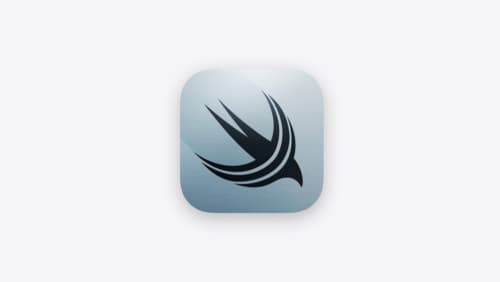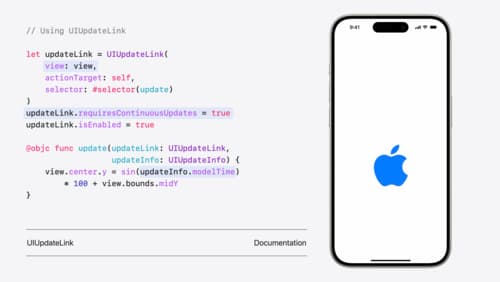how to integrate sup abase with swift app
Asked on 2024-09-24
1 search
To integrate Supabase with a Swift app, you can leverage Swift's interoperability with various frameworks and libraries. While Supabase is not directly mentioned in the WWDC sessions, you can use the general principles of integrating third-party services with SwiftUI or UIKit apps.
Steps to Integrate Supabase with a Swift App:
-
Set Up Supabase:
- Create a Supabase account and set up your project.
- Obtain your API keys and database URL from the Supabase dashboard.
-
Add Supabase to Your Swift Project:
- Use a Swift package manager or CocoaPods to add a Supabase client library to your project. If a specific Swift library for Supabase is not available, you can use URLSession or a third-party HTTP client like Alamofire to make network requests to the Supabase API.
-
Configure Your App:
- Initialize the Supabase client with your API keys and database URL in your app's setup code.
-
Perform CRUD Operations:
- Use the Supabase client to perform create, read, update, and delete operations on your database. This typically involves making HTTP requests to the Supabase REST API.
-
Handle Authentication:
- If your app requires user authentication, use Supabase's authentication features to manage user sessions and secure your API requests.
-
Integrate with SwiftUI or UIKit:
- Use SwiftUI's declarative syntax or UIKit's imperative approach to update your app's UI based on the data retrieved from Supabase.
Relevant WWDC Sessions:
-
SwiftUI essentials: This session discusses the interoperability of SwiftUI with other frameworks, which can be useful when integrating third-party services like Supabase.
-
What’s new in SwiftData: While focused on SwiftData, this session provides insights into managing data models and persistence, which can be relevant when working with external databases like Supabase.
By following these steps and leveraging the principles discussed in the WWDC sessions, you can effectively integrate Supabase with your Swift app. If you need more specific guidance on using a particular library or API, you may need to refer to the documentation provided by Supabase or the library you choose to use.

What’s new in SwiftData
SwiftData makes it easy to add persistence to your app with its expressive, declarative API. Learn about refinements to SwiftData, including compound uniqueness constraints, faster queries with #Index, queries in Xcode previews, and rich predicate expressions. Join us to explore how you can use all of these features to express richer models and improve performance in your app. To discover how to build a custom data store or use the history API in SwiftData, watch “Create a custom data store with SwiftData” and “Track model changes with SwiftData history”.

What’s new in UIKit
Explore everything new in UIKit, including tab and document launch experiences, transitions, and text and input changes. We’ll also discuss better-than-ever interoperability between UIKit and SwiftUI animations and gestures, as well as general improvements throughout UIKit.

A Swift Tour: Explore Swift’s features and design
Learn the essential features and design philosophy of the Swift programming language. We’ll explore how to model data, handle errors, use protocols, write concurrent code, and more while building up a Swift package that has a library, an HTTP server, and a command line client. Whether you’re just beginning your Swift journey or have been with us from the start, this talk will help you get the most out of the language.
